Prickly Pear Poisoning Paraphernalia
By Joan Bruce, Specialist Librarian, State Library of Queensland | 22 February 2018
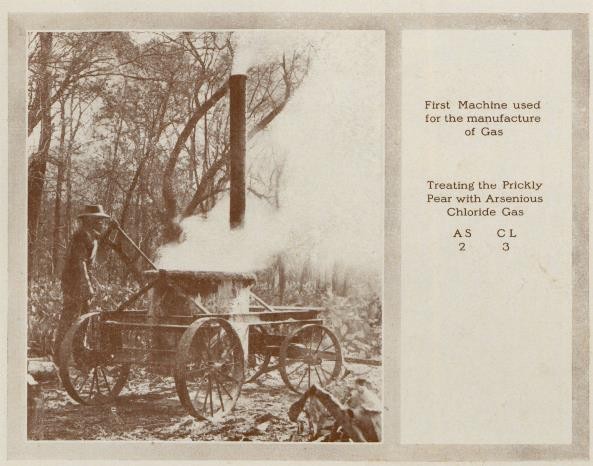
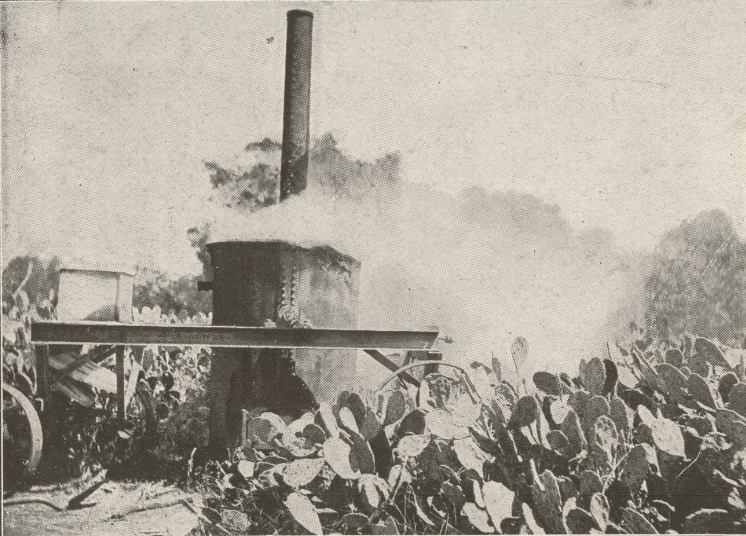
Gassing with arsenious chloride in 1915
Before the advent of the Cactoblastis moth it was the only effective method of control for the worst pest species, Opuntia stricta.
Vats of Boiling Arsenic
Just prior to the First World War, common or garden arsenic pentoxide was supplemented by an improved arsenious chloride compound invented by O.C. Roberts.
His 1913 Prospectus of Cactus Estates Limited shows the "first machine" used to spread this poison and The Queenslander of 27 March 1915 has a detailed description of the contraption.
"The machine is built somewhat on the lines of an ordinary washing boiler, with the furnace at the bottom" writes the paper's Special Representative. Pump it full of liquid arsenious trichloride, fire up the boiler and within an hour "the liquid was fairly boiling and the white fumes were rolling over the side and being spread over the landscape by the wind".
Mr. Roberts claimed that effects were "pronounced for distances up to four miles".
The 1920s
By the 1920s he had moved on from his vats of boiling arsenic and was marketing Roberts' Improved Pear Poison, a liquid rather than a gas which was meant "to be sprayed lightly by the atomizer method".
The Prickly-Pear Land Commission supplied an array of specialist pear poisoning gear - depending on whether you wanted to stab it, shoot it or do a little hand spraying.
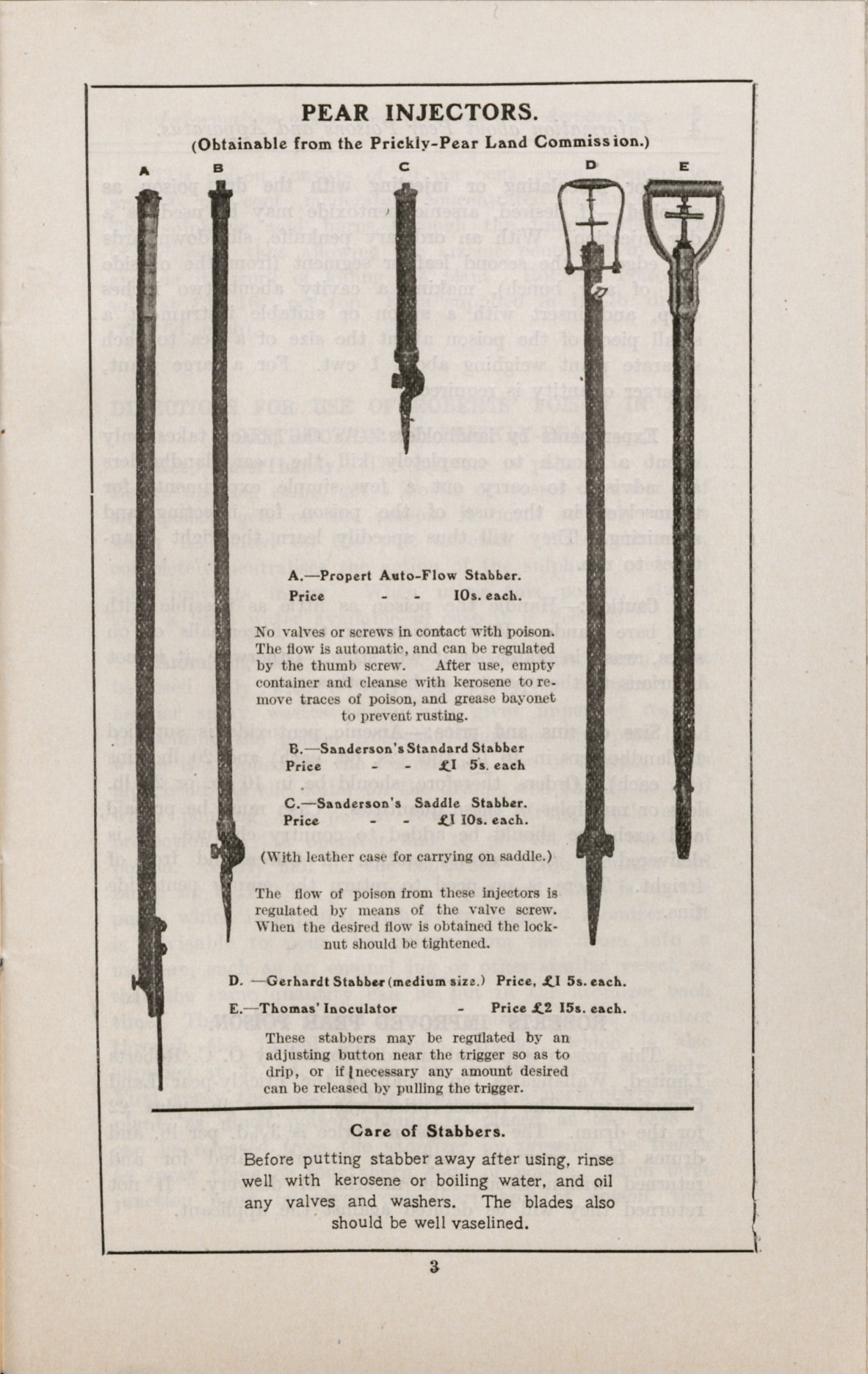
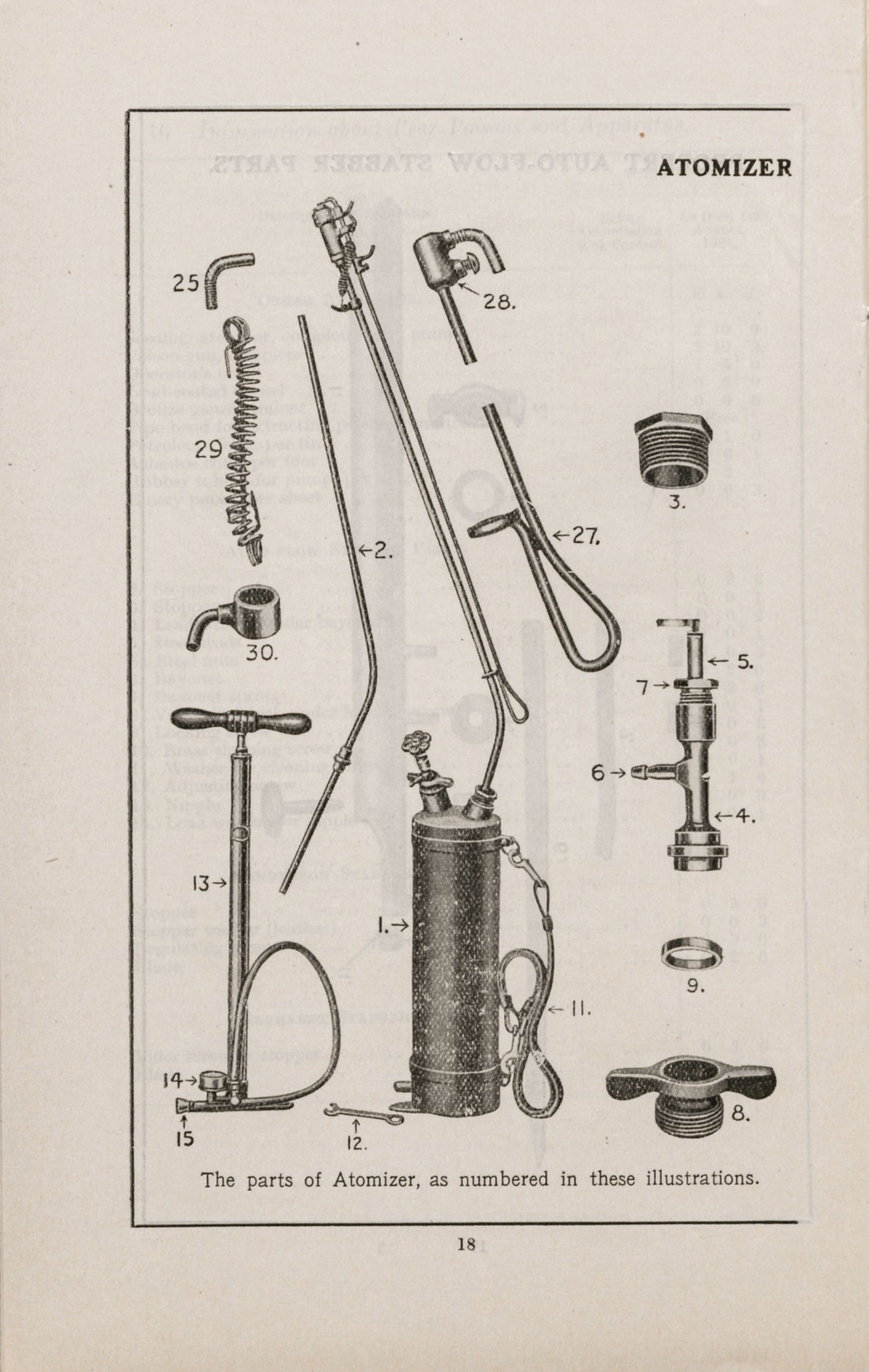
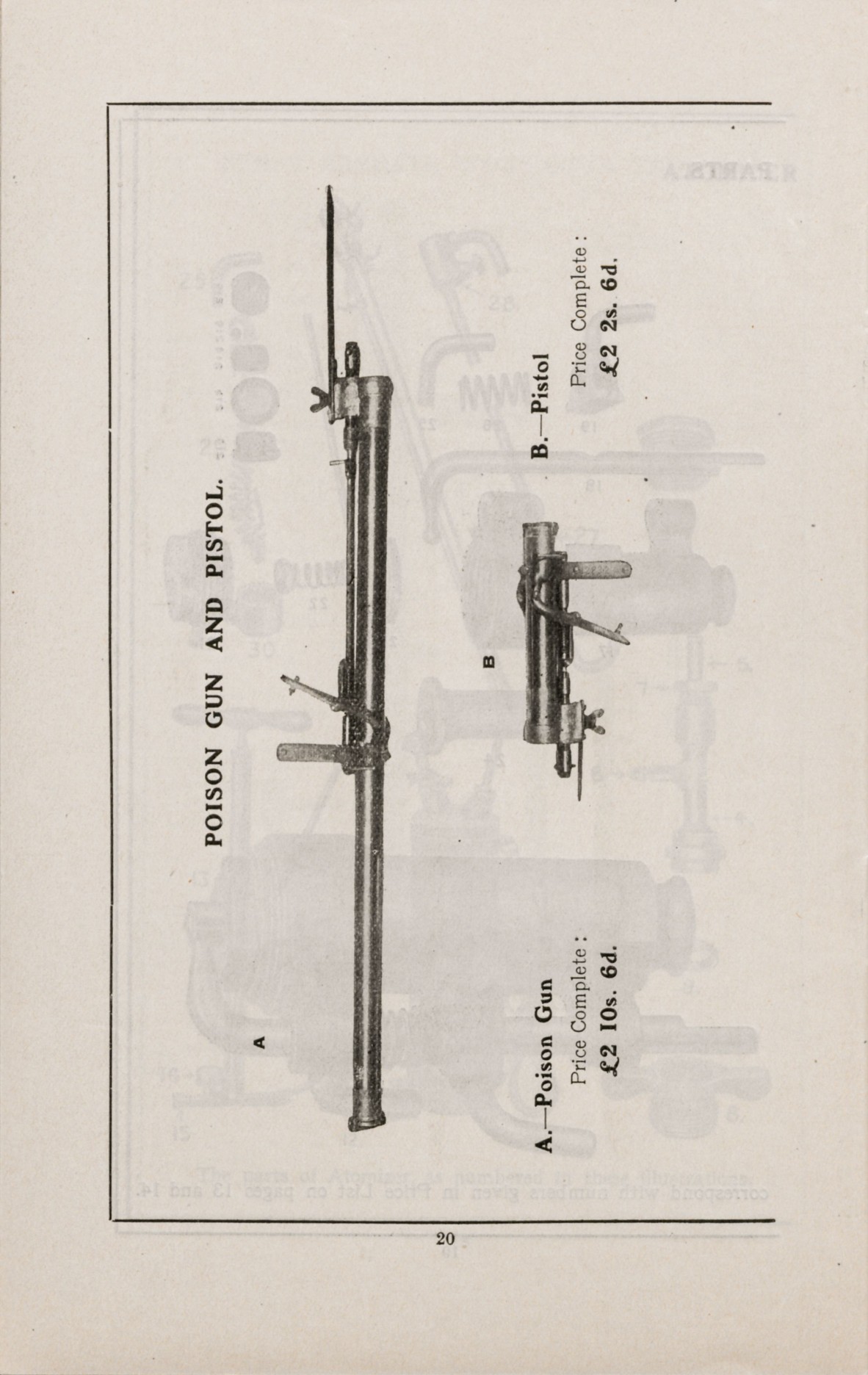
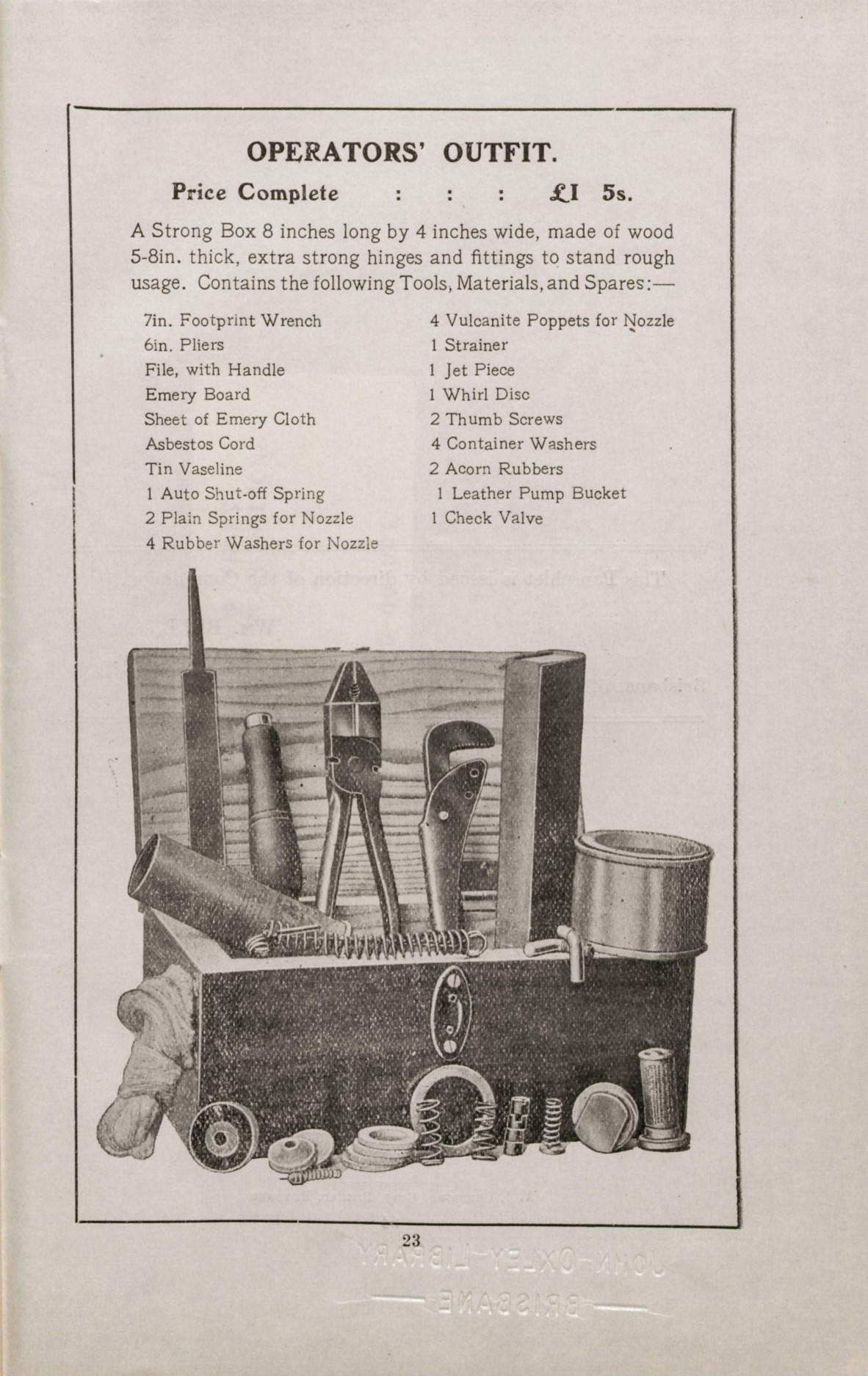
Read the Prickly-Pear Land Commission's 1927 booklet Information about pear poisons and apparatus to find out what the Vaseline was for.
You could also get your arsenic from the Commission. The basic product, arsenic pentoxide, came in 10 lb and 20 lb tins. Roberts' Improved Pear Poison, a mixture of arsenic and sulphuric acid, arrived in 100 lb drums.
The Commission breezily advised that there was little danger to stock, even in paddocks that were being poisoned at the time.
Thousands of tonnes of the stuff were used in the first decades of the 20th century and arsenic can still be detected in the soil of much of outback Queensland.
The story of the fight against prickly pear is one of those told in State Library of Queensland's exhibition, Magnificent Makers held from 9 December 2017 to 3 June 2018.
Information about pear poisons and apparatus and the Prospectus of Cactus Estates Limited are among the items featured in the exhibition.
Joan Bruce - Specialist Librarian, State Library of Queensland
Sources
- Prospectus of Cactus Estates Limited, 1913, p.11
- "Destruction of pear" The Queenslander Pictorial, 27 March, 1915, p.25
- "Prickly Pear Destruction: the arsenious trichloride method" The Queenslander, 27 March, 1915, p.35
- Information about pear poisons and apparatus, p.3, 18, 20, 23
- Roberts' Improved Pear Poison,
Comments
Your email address will not be published.
We welcome relevant, respectful comments.